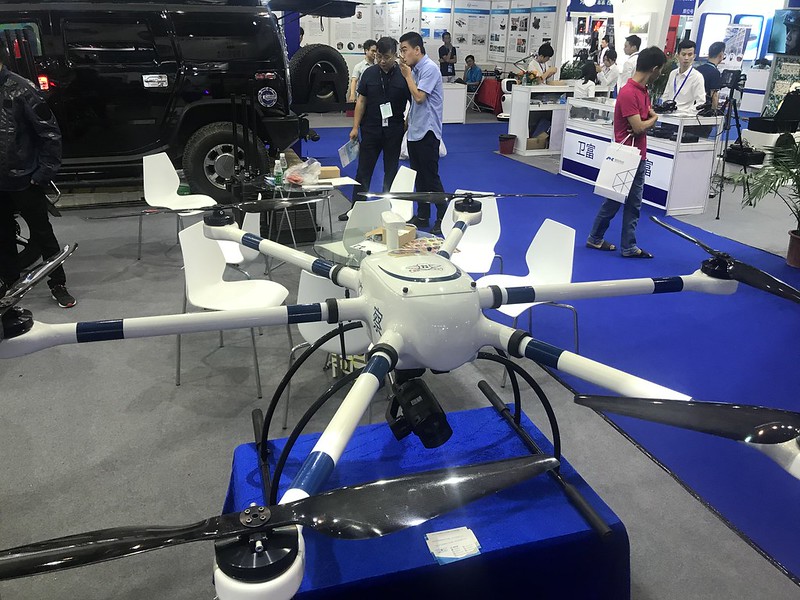Drone autonomy and international law
The article has been authored by Devika A Panicker, intern, Centre for Public Policy Research, Kochi.
The dominance of Azerbaijani Unmanned Aerial Vehicles (UAVs) over Armenian air defence systems was critical to the former’s decisive upper hand in the Nagorno-Karabakh border conflict in 2020. In the digital age, the technology has not only revolutionised our daily lives, but also the methods of warfare. The proliferation of drones, more significantly militarised drones, has called into question the ability of regulatory institutions to address the future of warfare. The Nagorno-Karabakh border conflict was an instance of typical aggravated geopolitical tensions for most but, for some, it proved to showcase one of the first instances of the unparalleled advantage that a technologically advanced armed force possesses.

The militarised use of drones is divided into two categories which are UAVs and Unmanned Combat Aerial Vehicles (UCAVs). The military purposes for drones range from surveillance/reconnaissance, intelligence gathering and target acquisition; while UCAVs are specifically used in direct combat with the advantage of fewer casualties. The Azerbaijan army had used Israeli manufactured Harop drones, which is a loitering munition drone, which essentially identifies air defence systems and launches itself into them to destroy it, earning it the nickname Kamikaze drones. Similarly, the Israeli manufactured Heron drones have also been extensively used by the Indian Army in the disputed region along the Line of Actual Control between China and India. The drones prove to be vital for long surveillance missions, and plans to develop armed models will additionally upgrade the capabilities of the armed forces as well as reduce the number of casualties.
The regulatory framework for war has been institutionalised primarily through International Humanitarian Law (IHL), also known as the Law of War. As it stands, IHL does not have an explicit regulatory clause that explores the use of UAVs or UCAVs in war; however, the application of the general principles has considered them, specifically UCAVs, to be a platform to launch or transport a weapon rather than being a weapon itself. Additionally, the use of militarised drones is subject to the principles of proportionality (rule 14, IHL) and the principle of distinction (rule 1, IHL). The principle of proportionality prohibits military attacks that destroy military assets and cause loss of civilian life and property in a highly disproportionate manner. To contextualise this principle in the border crisis, Azerbaijan's extensive arsenal of two hundred Harop drones capable of dispensing munition was highly disproportionate to the one locally manufactured drone that the Armenian army had. There is also the expert consensus of the monumental advantage that this weaponry provided Azerbaijan in cinching the win. The principle of distinction allows signatory States to only attack military targets. The question then is, are the existing principles sufficient to address the continued technological advancements in drone automation?
The Society of Automation Engineers (SAE) has formulated six levels, level 0 to level 5, of autonomy standards for ground vehicles that may be applied to understanding the level of autonomy of any vehicle capable of it. Experts apply the SAE standard to analyse the fourth level of drone autonomy, which is categorised as drones that are capable of autonomous navigation as explored through sub-categories of awareness, basic navigation and expanded navigation. The latter two sub-categories are the key points in the distinction as they assess the capability of the UAV to avoid objects and collisions (basic) as well as pathway planning and multiple use autonomous navigation (expanded).
A degree of fourth-level autonomy (level 4a) has already been achieved by Exyn Technologies’ most recent drone which is only two levels short of level five (full autonomy). This level of autonomy allows the operator to assign an end point location and the drone can map its own route while also being sensitive to tangible obstacles such as trees, and intangible obstructions such as dust or fog. Though this development is already seen in the commercial space, the increased spending of all major superpowers in defence and weapons development has surely impacted the accelerated advancement in this technology. Although the concept of completely autonomous UAVs and UCAVs remains a prototype, the future of predominantly autonomous drone warfare may not be as far into the future as one would think. Incidentally, we have already started to witness the disproportionate advantages of low-level autonomy in drone technology in warfare which will continue to be exacerbated in the coming years as geopolitical tensions are on the rise. Thus, international institutions must confront the legal structure in place and consider their effectiveness in addressing the changing nature of warfare.
The article has been authored by Devika A Panicker, intern, Centre for Public Policy Research, Kochi.
All Access.
One Subscription.
Get 360° coverage—from daily headlines
to 100 year archives.



HT App & Website







